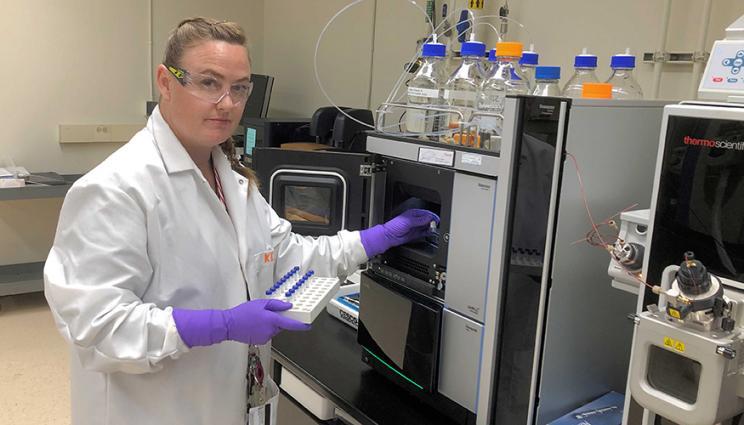Many processes currently exist for separating a mixture of chemicals into individual chemical components, such as filtration, distillation, and chromatography. The device described in this invention is closely related to traditional chromatography. In traditional chromatography, the mixture of chemicals is suspended in a fluid ("mobile phase"). The mobile phase is flown over a stationary phase generally consisting of a packed or porous bed of a ceramic or polymeric material. With judiciously chosen phases, the chemical components in the mixture have different affinities for the stationary phase. Thus, they migrate at different rates through the chromatography device and subsequently exit the device at different times, or equivalently, reside at different positions along the flow direction at a given point in time. The disadvantage of chromatography is that it is sometimes impossible to choose a single mobile/stationary phase combination that produces sufficient separation of all components of the mixture. This can be mitigated by using a technique called 2D chromatography which is sequential 1D chromatography steps in orthogonal directions using two different mobile phases. However, this technique is inherently a batch process, is time consuming, and is difficult to recover the separated components.This invention addresses the current shortcomings of the techniques of separating a mixture of chemicals into individual chemical components.
This invention is an improved chromatography device that utilizes the concept of a functionally graded material (FGM) for separation of components. The technology consists of a device that contains a FGM that is patterned to have a gradient in material properties (e.g. chemical affinity, surface chemistry, chirality, pore size, etc.) normal to the direction of flow of the mobile phase. The mixture is carried through the FGM by a mobile fluid phase, and the fluid that emerges from the FGM has the different components separated from each other. The main advantages of this technique over traditional chromatography is that it can be a continuous process (a continuous stream of the chemical mixture can be fed to the device and the material is continuously separated into its constituents), and it can be run at steady-state. This technology is particularly useful for handling chemicals in a hazardous waste steam, forensic analysis or when performing screenings on novel compounds that require high throughput and thorough separation of individual components.
The figure illustrates the movement of the fluid in this technology. The mixture flows in at a point on the functionally gradient material (FGM), is carried through the FGM by a mobile fluid phase, and the fluid that emerges from the FGM has the components spatially separated from each other.
- Where needed, it can be a continuous process. A continuous stream of the chemical mixture can be fed to the device and the material is continuously separated into its constituents.
- Where needed, it can be run at steady-state. The state of the system at any time is the same as at any other time.
- Particularly useful for handling chemicals in a hazardous waste steam, forensic analysis or when performing screenings on novel compounds that require high throughput and thorough separation of individual components
- Sample Preparation
- Forensics analysis
- Chemical Separation
- Water Softening
LLNL has obtained a patent (US Patent 10,130,899) covering this technology (LLNL Internal Case # IL-12542)


